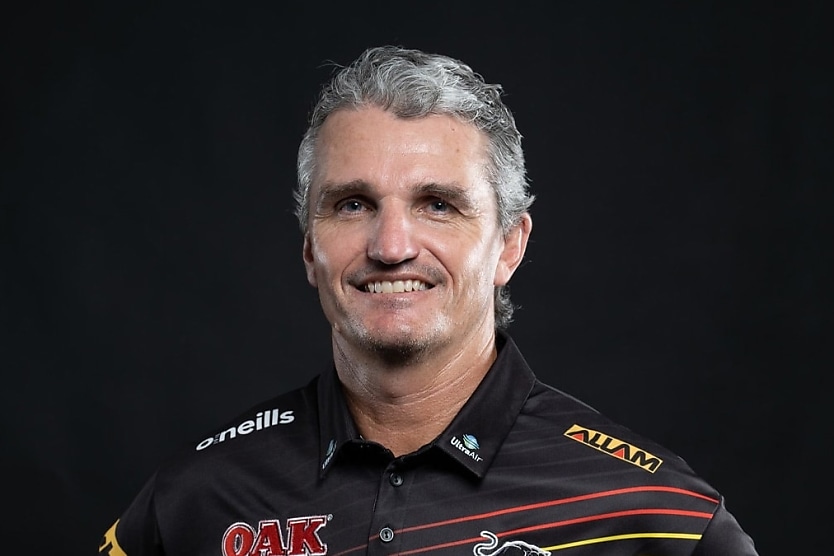Building a winning culture, according to a premiership-winning NRL coach
SHARE THIS ARTICLE

Ivan Cleary, the head coach of reigning NRL premiers Penrith Panthers, recently shared the key factors that helped him establish a winning culture within his team, which business leaders across the board can also apply.
Editor’s note: This story first appeared on HR Leader’s sister brand, Lawyers Weekly.
After 12 years of coaching in the NRL, Ivan Cleary began to feel that he was merely “surviving” as a head coach within the competition. However, when he returned to the position of head coach of the Penrith Panthers, he made a conscious decision to shift his philosophy and perspective towards cultivating a winning culture within the team.
This change in approach has had a profound impact on his team’s performance within the last few years. From winning games “here and there”, he now leads a team that has achieved unparalleled success and secured the NRL premiership three times consecutively – an unprecedented accomplishment in the modern era.
The insights he has gained about fostering a successful culture within an NRL club are also pertinent, he recently explained at the inaugural Partner Summit, hosted by HR Leader’s sister brand, Lawyers Weekly, to leaders in the legal field seeking to improve their team dynamics and striving to establish a successful and thriving legal firm.
Cleary provided insight into the three pivotal elements that constitute his blueprint for cultivating the successful culture he has instilled within his team: “How do we look? How do we feel? And how do we act?”
He explained that the first factor, “how do we look?” refers to the external and internal perceptions of the team. In the context of a legal team, the external appearance pertains to how the firm’s clients and competing firms perceive them, while the internal aspects relate to how colleagues perceive each other within the team.
Within this factor, Cleary outlined the significance of being mindful of the non-verbal cues and physical presentation that your team conveys to others.
“We practice on a daily basis that whenever we’re tired, fatigued, or stressed, we try to show strong body language. That doesn’t mean we’re not fatigued, but that shows to the opposition that we’re and also tells yourself that we’ve got more to give,” he said.
He also commented on the importance of a team being organised, stating that disorganisation and teams in disarray typically result in poor teamwork and the inability of a team to achieve success.
Cleary’s second factor pertains to “how a team wants to feel”. He emphasised the importance of creating a working environment where team members feel appreciated for their individuality, as it fosters optimal performance and productivity.
“To get the best out of our people, our players, our staff, we wanted to create that psychologically safe environment where, regardless of where you come from, the colour of your skin, or your personality, as long as you live the values of the organisation, then you can be you,” he said.
He further said: “One of the big changes or ways we tried to build that environment of trust was that we start each day with a player or staff member being interviewed down the front of our theatre where all our meetings take place.”
Cleary stressed the significance of team leaders continually striving to foster a safe work environment, even when they believe they have achieved one, as this aspect requires constant improvement and adaptation.
“But it’s something that we’re continuing to try and foster that safe environment because, the fact is, you probably never achieve it, and if you think you have achieved it, it can actually be broken very quickly,” he said.
Another crucial aspect of this factor is to establish a supportive environment where team members feel empowered and encouraged to collaborate with each other.
The third and final element that has contributed to Cleary’s success in fostering a winning culture at the Penrith Panthers is the consideration of “how we act”.
Cleary outlined that a critical aspect of this factor involves cultivating a work environment and ethos that facilitates the occurrence of effective teamwork.
He further said: “We’ve got to not just preach it, but show it and get that real collective theme. So, from just little bits of team-based actions or valuing or celebrating actions that no one else will see but we will understand. That’s sort of one way of achieving that.”
Lastly, he outlined how vital it is to act with mental courage when you are facing moments of fear and anxiety, saying that “at the end of the day, if you face your fears, you can’t fail”.
RELATED TERMS
Your organization's culture determines its personality and character. The combination of your formal and informal procedures, attitudes, and beliefs results in the experience that both your workers and consumers have. Company culture is fundamentally the way things are done at work.
